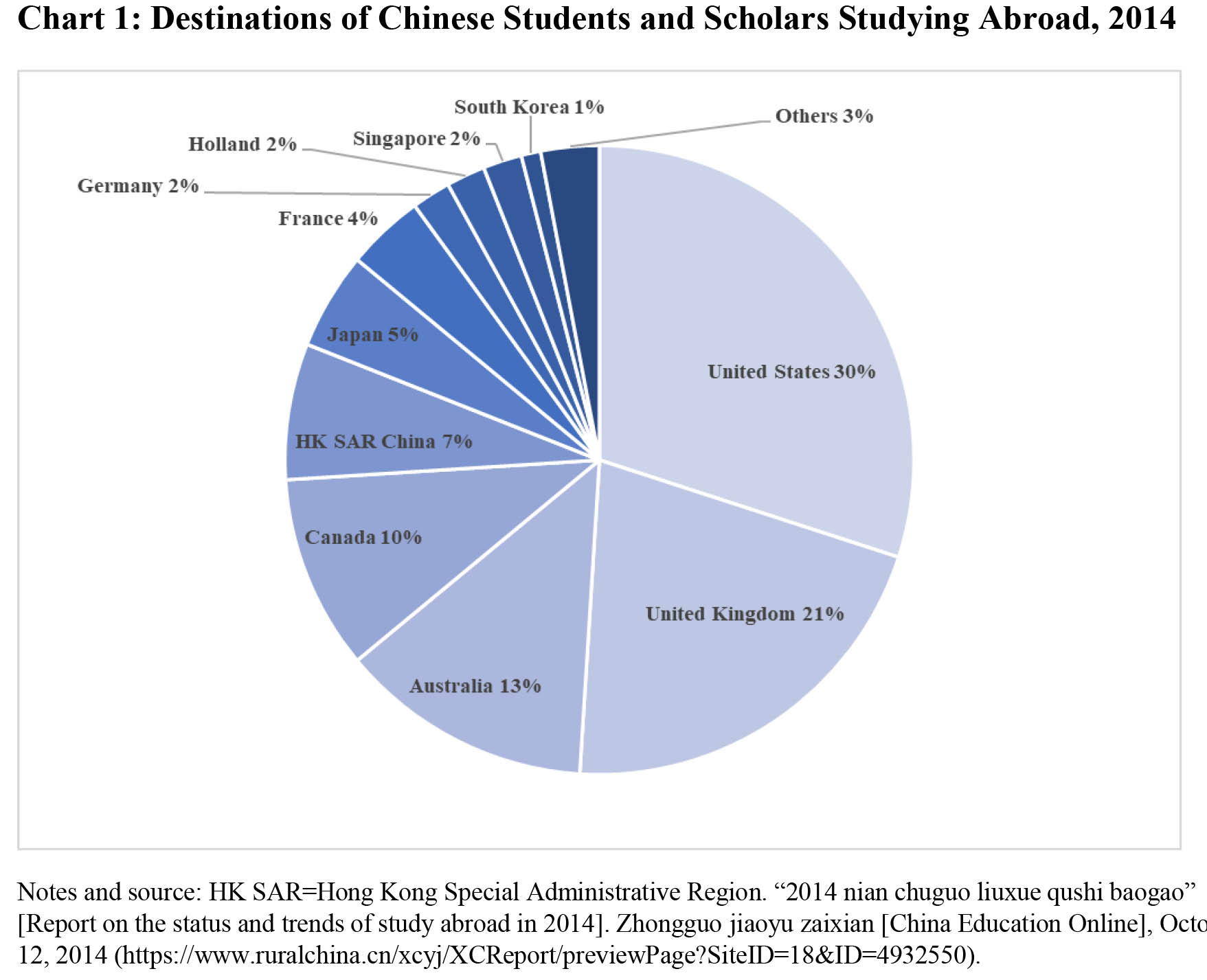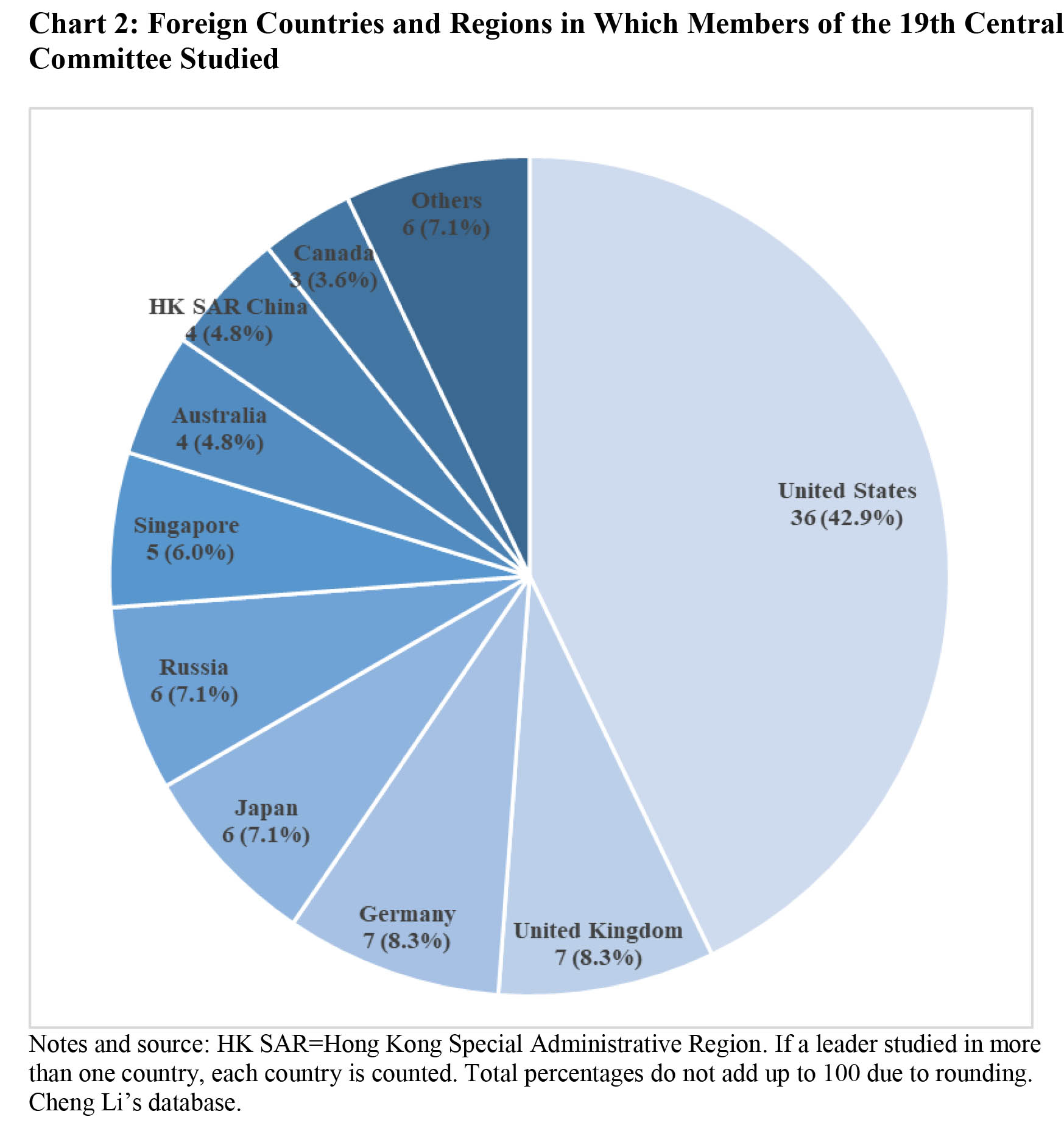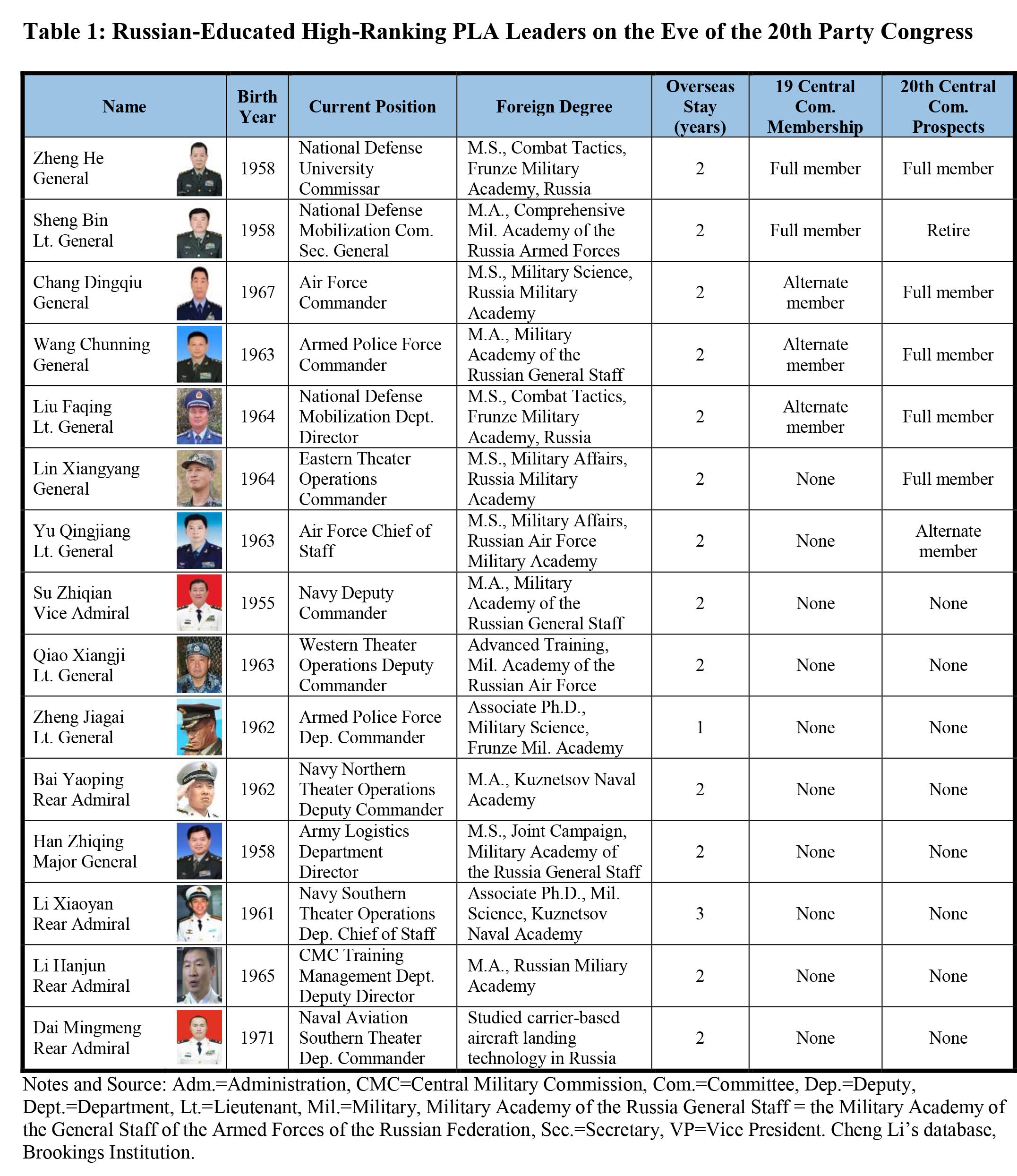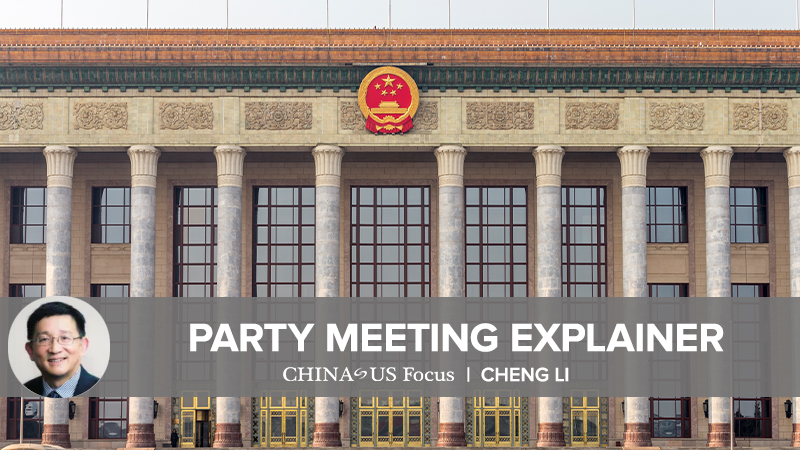Students of Chinese elite politics have long been intrigued by the close ties between education and politics — between the destinations of students studying overseas and China’s changing political orientation and foreign relations. Two key aspects of this connection have often been analyzed. First, how can differences in the educational backgrounds of political leaders be attributed to internal tensions? For example, in the Mao era, and especially during the Cultural Revolution, violent social conflict and elite power struggles at least partially stemmed from the sharp contrasts in the educational attainment of China’s leaders.
And second, personal overseas educational experiences have had an enduring influence on many prominent future leaders. In contemporary China, the country’s political orientation has often been influenced by governing elites’ educational and political experiences abroad. As some scholars have observed, the early Nationalist government was “pro-Japanese,” largely because its ruling class was composed of many returnees from Japan. The foreign policy of the Nationalist government later shifted when some returnees from the West, especially the United States, rose rapidly into leadership positions. As a result, the government became increasingly pro-American.
In present-day China, given that virtually all political and military leaders are college educated, potential internal tensions and external policy disputes among Chinese Party-state leaders may have more to do with differences in educational areas of study, professional backgrounds, whether they were educated at home or abroad, and the countries in which they studied. Differences within ruling elites are, of course, not necessarily a problem. They can contribute to the diversity of views and policies in decision making.
One interesting new phenomenon is that while China’s corps of civilian leaders has included a disproportionate number of Western-educated, and especially U.S.-educated, returnees (as shown in several previous articles in this series), an increasingly large number of military officers of the People’s Liberation Army (PLA) have been trained in Russia.
The impact of Russia-educated Chinese leaders: An historical perspective
The history of contemporary China is also the history of the multifaceted exchanges between Chinese people and the outside world. Foreign-educated returnees have often played a crucial role in the political change, socioeconomic life, dissemination of foreign culture and ideology, and development of science and technology in China. Political leaders like Sun Yat-sen, Chiang Kai-shek, Chen Duxiu, Li Dazhao, Hu Shi, Zhou Enlai, Deng Xiaoping, Chiang Ching-kuo, Jiang Zemin, and Li Peng all studied and worked abroad early in their careers. They have played outsized roles in shaping the trajectory of contemporary China.
The early years of the Republican era (1912-1928) sent many students to study at St. Petersburg University and Artillery School in Russia. But most Chinese nationals who participated in the work-study program in France and the political study program in the Soviet Union during the first half of the last century were more engaged in political and ideological activities than in academic or military studies.
During their short existence, Sun Yat-sen University and the Communist University for Toilers of the East, both located in Moscow, trained some 800 Chinese “revolutionary comrades,” who later became the backbone of both Leninist parties in China (the Chinese Communist Party and the Nationalist Party). In fact, the multitude of Chinese nationals who studied in France and the Soviet Union during the early twentieth century facilitated the emergence of the Chinese Communist Party (CCP). Chinese Communist leaders Liu Shaoqi, Ren Bishi, Ye Jianying, Deng Xiaoping, Dong Biwu, Lin Boqu, Nie Rongzhen, and Ye Ting studied in the Soviet Union during that period.
Understandably, after the 1949 Communist Revolution in China, the Soviet Union became the main destination for Chinese students pursuing education abroad. Between 1949 and 1960, the People’s Republic of China (PRC) sent 8,163 students to the Soviet Union, accounting for 88 percent of the total number of students sent abroad during that period. From 1950 to 1965, only about 250 (2 percent) of the total number of Chinese nationals who studied abroad went to nonsocialist countries, where they mainly studied foreign languages.
Most students studying in the Soviet countries majored in engineering and the natural sciences. Technocrats who had studied in the Soviet Union or Eastern European socialist countries in the 1950s dominated the “third generation” of PRC leaders in the reform era. Among their ranks were Jiang Zemin, Li Peng, Luo Gan, Li Lanqing, and Wei Jianxing, all of whom later served on the powerful Politburo Standing Committee. Large-scale educational exchanges between China and the Soviet Union ultimately ended in the early 1960s because of political and ideological disputes between the two countries.
The distribution of foreign study by country among PRC students and 19th CC members
An overwhelming majority of participants in the Reform-era study abroad movement, initiated by Deng Xiaoping in 1979, went to Japan, Singapore, and especially the United States and other Western countries. Chart 1, based on a single year of statistics from 2014, shows the distribution of PRC students and scholars by destination country. The United States was home to the largest percentage (30 percent) of PRC citizens studying abroad, followed by the United Kingdom (21 percent), Australia (13 percent), and Canada (10 percent). These four English-speaking Western countries have hosted almost three-quarters of the total number of Chinese students and scholars pursuing foreign studies. Those who studied in Russia account for less than one percent and thus are included in the category of “others” (a total of 3 percent).

In the wake of growing tensions between China and U.S.-led allies in recent years, the Chinese government has made a concerted effort to send more students and scholars to destinations outside of the United States and NATO countries. In 2017, a total of 66,100 Chinese nationals studied in countries participating in the Belt and Road Initiative, including Russia, which saw a 16 percent increase in Chinese students over the prior year. As the previous article in this series showed, the number of Chinese students studying in Russia has grown significantly over the past decade. It is expected that the number of students returning to China from Russia will increase in the near future.

Correspondently, Chart 2 presents the foreign countries and regions in which members of the 19th Central Committee (CC) studied. The United States ranks at the top (42.9 percent), followed the United Kingdom (8.3 percent) and Germany (8.3 percent), reaffirming the dominance of Western-educated returnees in the Party leadership. There are, however, six CC members (7.1 percent) who studied in Russia (most of whom are military officers).
The growing number of PLA officers trained in Russia over the past decade
Compared with civilian universities and research institutions, China’s military academies and PLA forces were latecomers when it came to foreign education and training. According to an official Chinese source, the Central Military Commission (CMC) began sending officers for overseas training in the mid-1990s. Between 1996 and 2017, China sent more than 1,600 military students to more than 70 universities, miliary academies, and research institutions in 29 countries, including Russia, the United States, the United Kingdom, France, and Germany. The first batch of 42 PLA officers attended nine Russian military academies in 1996. An article in the PLA Daily stated that “due to historical, political, geographical, and other reasons, Russia accounted for the majority of PLA officers trained abroad.”
PLA officers who study in Russia usually participate in one of three types of military training. The first is practical training for weapon and equipment operation. Over the years, China has imported a significant amount of battle equipment from Russia, including S-300 air defense missiles, Sukhoi Su-27 and Sukhoi Su-30 fighter jets, “Kilo-class” submarines, and Hyundai guided missile destroyers. PLA officers were sent to Russia for operational training on these vehicles and military equipment.
The second type is the intermediate training program, which is carried out by various military institutions such as the Russian Army Synthetic Military Academy, the Gagarin Air Force Academy, and the Russian Military Academy of Logistical Support. This intermediate program would include one group of 40-50 PLA participants each year, with the program lasting 2-3 years. Regiment-level officers (tuanji) are the targeted participants for this program.
The third type is an advanced training program, which is run by the Military Academy of the General Staff of the Armed Forces of the Russian Federation. This one-year program included 12-20 spots each year in the late 1990s. After 2000, the program was shortened to five months, with two groups of 5-7 participants each year. Chinese participants in this program are all division-level (shiji) officers in their late 30s (around 38-40 years old). They mainly take courses on military strategy and operations. Some other PLA officers have also attended advanced programs at other academies such as the Zhukovsky Air Force Engineering Academy, Russian Naval Academy of Radio-Electronics, Kuznetsov Naval Academy, and Frunze Military Academy.
Hao Zhihui, a PLA colonel and researcher at the National Security Strategy Research Office, published a book in 2018 entitled “My Studies at the Frunze Military Academy,” documenting his three-year (1996-1999) study experience in Russia along with 11 fellow Chinese officers. This popular book provides substantial discussion of the military tradition, sociopolitical transformation, strategic thinking, and national character of the Russians, or what Hao characterizes as the mysterious “fighting nation” (zhandou minzu), as well as Chinese-Russian relations.
The Chinese authorities have claimed that among the PLA officers who have completed their foreign studies and returned to China, more than 1,000 have been promoted. Among them, more than 50 have taken up leadership positions above the army-level (junji), and more than 400 have taken up leadership positions above the division-level. The source did not specify the country where most of these officers who were later promoted had studied, but one can reasonably assume that many attended the aforementioned programs in Russia.
High-ranking Russian-educated PLA leaders to watch
Table 1 includes 15 Russian-educated PLA senior officers on the eve of the 20th Party Congress. Most of these officers (13 of 15) studied in Russia for two years and most attended degree programs at top military academies in the country. The other two officers studied in Russia for one year and three years, respectively.

Four of these PLA officers hold the military rank of general, six are lieutenant generals or vice admirals, and the other five are major generals or rear admirals. Five of them currently serve on the 19th CC, including two full members, Commissar of National Defense University Zheng He (1958) and Secretary General of the National Defense Mobilization Committee Sheng Bin (1958); and three alternate members, Air Force Commander Chang Dingqiu (1967), Commander of the Armed Police Force Wang Chunning (1963), and Director of the National Defense Mobilization Department Liu Faqing (1964). Four of these high-ranking officers –– Zheng, Chang, Wang, and Liu –– will most likely serve as full members of the 20th CC this October while Sheng is expected to retire.
Commander of Eastern Theater Operations Lin Xiangyang (1964) and Air Force Chief of Staff Yu Qingjiang (1963) are two rising stars in the Chinese military leadership. They will both likely enter the 20th CC as first-timers (Lin as a full member and Yu as an alternate member). Yu Qingjiang, for example, is a pilot by training who graduated from an Air Force flight academy and then studied at the PLA Air Force Political Academy, the Russian Air Force Military Academy, and the PLA Air Force Engineering University. He served as commander of the 30th Division of the Air Force of the Shenyang Military Region. In 2007, he was promoted to serve as commander of the Air Force Dalian Command. Two years later, he was transferred to serve as deputy chief of staff of the Jinan Military Region Air Force. In 2013, he was promoted to be chief of staff of the Jinan Military Region Air Force. In 2015, he was appointed as president of the Air Force Command College. In 2017, he was promoted to be Air Force chief of staff. Noticeably, two key officers in PLA Air Force operations, Commander Chang Dingqiu and Chief of Staff Yu Qingjiang, both studied in Russia.
Several officers listed in Table 1 may not be able to enter the 20th CC. Some will retire because of their age in the coming years while some others will still have a chance at further promotion. For the latter, Western Theater Operations Deputy Commander Qiao Xiangji (1963), Armed Police Force Deputy Commander Zheng Jiagai (1962), Naval Northern Theater Operations Deputy Commander Bai Yaoping (1962), and CMC Training Management Department Deputy Director Li Hanjun (1965) can play important roles in the near future.
Naval Aviation Southern Theater Deputy Commander Dai Mingmeng (1971) is another rising star in the PLA leadership. He joined the PLA in 1990 and is trained as a navy pilot. In 2003, Dai was chosen to be among the first cohort of pilots to study carrier-based aircraft flying in Russia. Dai has also been known as the first person to both land on and take off from the Liaoning aircraft carrier with the J-15. Dai served as commander of the PLA Navy’s carrier-based aviation unit and commander of the Carrier-based Aircraft Comprehensive Test and Training Base before assuming his current position. Dai is a delegate to the 20th Party Congress, representing his 7G PLA cohort.
It should be noted that the number of high-ranking Russian-educated PLA officers listed in Table 1 is by no means complete. A review of the official bios of China’s senior military elites shows that many of them do not provide their educational background. One can reasonably assume that some have undertaken training overseas, including studies in Russia. In 2002, then Russia Defense Minister Sergey B. Ivanov told the Chinese media that over the previous decade (1991-2002), Russia had trained over 2,000 Chinese officers, and about 200 Chinese officers were studying at the Russian military academies at the time.
According to a Chinese official source, in the decade prior to 2017, more than 2,000 military officers studied in foreign countries. Even more astonishingly, one Chinese official source reported in 2007 that 10 percent of army-level officers in PLA combat troops had studied abroad. It is difficult to verify the accuracy of these sources. Even if true, certainly not all these officers studied in Russia.
In 2008, it was reported that some PLA officers attended the Royal Military Academy Sandhurst, the most prestigious military academy in the United Kingdom. Navy Rear Admiral Zhang Zheng (1969), the first captain of China’s first aircraft carrier Liaoning and now commander of PLA Navy Unit 91910, which oversees China’s first domestically manufactured aircraft carrier, Shandong, was educated in the UK. From July 2001 to August 2003, Zhang studied at the Defense Academy of the United Kingdom and the Joint Services Command and Staff College.
Nevertheless, at a time when the relationship between China and U.S.-led NATO countries has rapidly deteriorated, one can expect that China-Russia military ties will likely become even stronger. Chinese participation in “Vostok 2018,” the military exercises in Russia’s Far East, and more recently in “Vostok 2022,”, reflects this trend. This development makes the examination of the status of Russian-educated military elites –– as well as civilian leaders –– in the Chinese leadership critically important.

